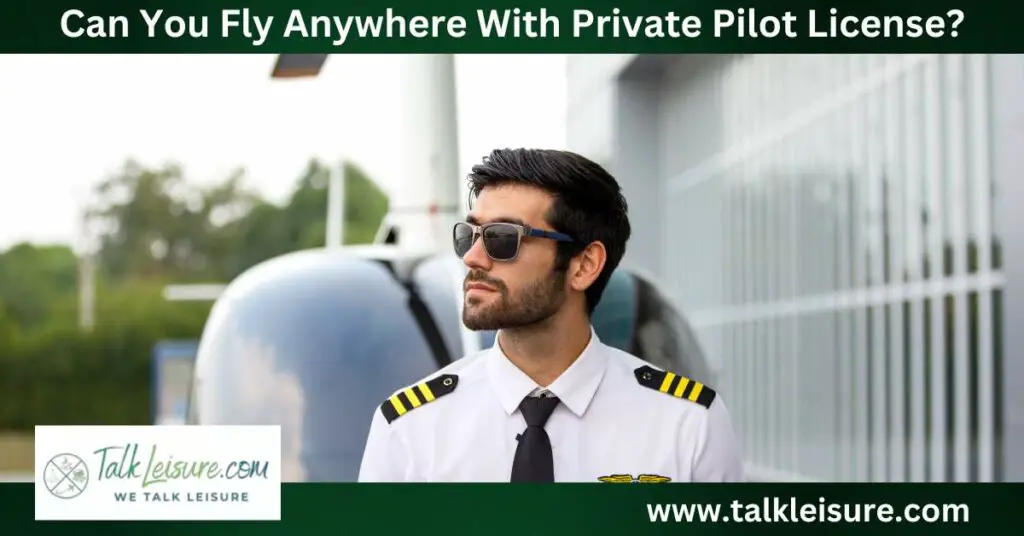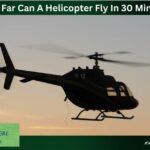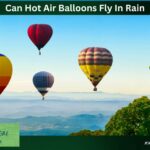So you’ve earned your private pilot license and are ready to take to the skies!
But before you embark on your next adventure, it’s essential to understand the limitations of your license and where you can fly.
While a private pilot license grants you the ability to pilot an aircraft privately, there are certain restrictions and requirements to remember.
Having a private pilot license does not automatically grant you the ability to fly anywhere in the world.
A private pilot can fly to various destinations, but certain limitations and restrictions exist.
This blog post will explore whether you can fly anywhere with a private pilot license and what you need to know before planning your next flight.
What Are The Requirements To Obtain A Private Pilot License?
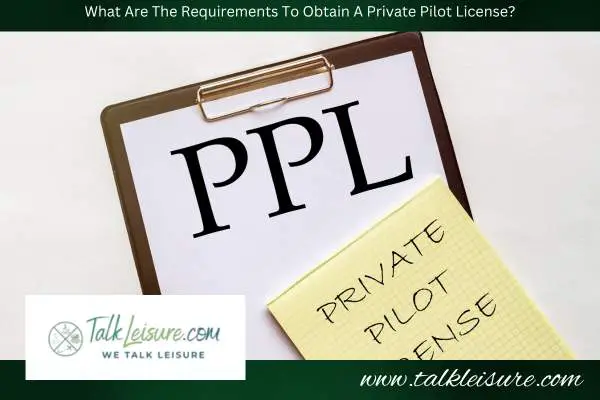
Before we dive into the limitations of a private pilot license, let’s quickly go over the requirements to obtain one.
A private pilot must be at least 17 years old to earn a private pilot license.
The individual should undergo a medical examination and hold a valid medical certificate to ensure you are physically fit to fly.
You must pass the Federal Aviation Administration (FAA) knowledge test covering various topics, including aircraft systems, navigation, regulations, and weather.
It is necessary to complete at least 40 hours of flight time, including at least 20 hours of flight instruction and 10 hours of solo flight.
You must pass a practical test administered by an FAA-designated examiner, including a flight and oral examination.
Once you have met these requirements and obtained your private pilot license, you can fly certain aircraft under specific conditions.
Now, let’s explore the limitations of where a private pilot can fly.
Where Can You Fly With A Private Pilot License?
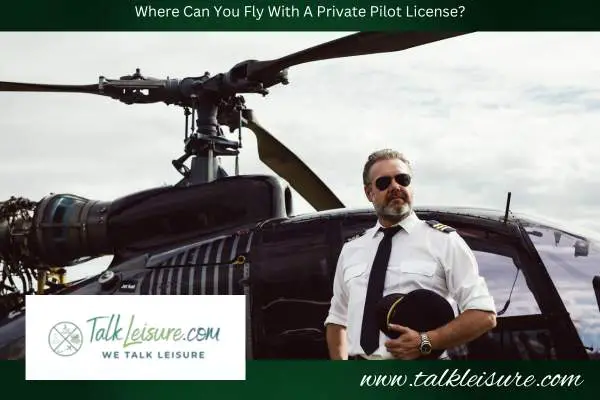
You can fly to various destinations with a Private Pilot License (PPL).
However, there are some limitations and restrictions to keep in mind.
Here are the general guidelines on where you can fly with a PPL:
Within Your Country
As a private pilot, you can fly within the borders of your own country.
You can explore different regions and enjoy the scenic beauty of your homeland.
Cross-Country Flights
A PPL allows you to fly across the country and plan cross-country flights to visit different cities or locations. It’s a great way to explore new places and experience the joy of flying.
International Flights
While a PPL allows you to fly internationally, additional requirements and restrictions must be considered.
You must obtain the necessary permits and clearances and follow the rules and regulations of each country you plan to visit.
If are a U.S. citizen there may be some restriction when travelling to Cuba. Stay updated about them as the restrictions would change over time.
Researching and preparing in advance is important to ensure a smooth and hassle-free international flight.
Private Airport
With a PPL, you can land at private airports that allow general aviation traffic.
These airports are typically smaller and offer a more relaxed flying experience.
Private Property
In some cases, you may have permission to land your aircraft on private property with the owner’s consent.
It provides flexibility in choosing your landing sites, especially in remote areas with limited public airports.
How Far Can You Fly With A Private Pilot License?
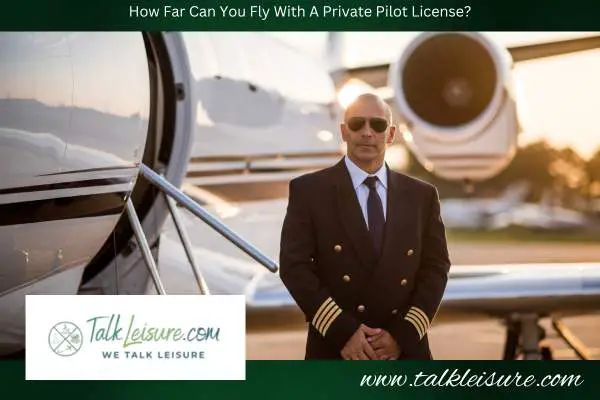
The distance you can fly with a PPL depends on several factors, including the type of aircraft you are flying and the fuel capacity.
The endurance of your aircraft determines how long you can fly without refueling.
Depending on the type of aircraft and its fuel capacity, you may be able to fly for several hours before needing to refuel.
The distance you can fly in one trip depends on the range of your aircraft.
Each aircraft has a specific range or maximum distance it can cover on a full fuel tank.
It’s important to know and consider the range of your specific aircraft when planning your flights.
You may need to make refueling stops along the way for longer flights.
This allows you to extend your flying range and reach destinations that are farther away.
Weather conditions can affect the distance and duration of your flight.
Headwinds, crosswinds, and adverse weather conditions can impact your fuel consumption and overall flying range.
It’s essential to check and consider weather forecasts before planning your flight.
Another factor to consider is your personal endurance as a pilot.
Long-distance flights can be tiring, so it’s important to ensure that you are well-rested and physically prepared for the journey.
You may fly directly to Abu Dhabi and various other destinations from different U.S. airports. However when fly with a PPL there may certain limitations.
Remember, safety is always a top priority when flying.
It’s important to comply with all regulations, conduct thorough pre-flight planning, and prioritize safety.
Does The Weather Have An Impact On Private Pilot Operations?
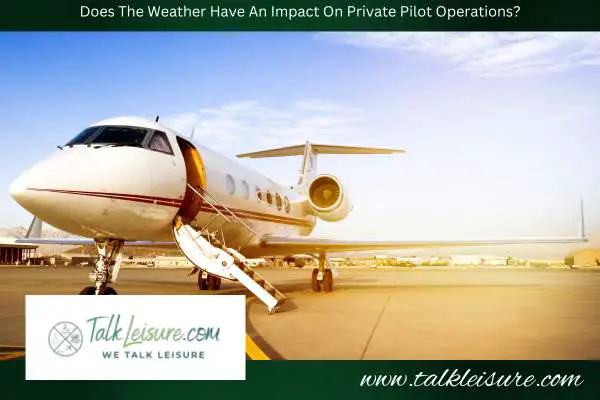
Weather plays a crucial role in private pilot operations.
It can greatly impact flight safety and planning.
Poor visibility due to fog, rain, or other weather conditions can make flying unsafe and hinder the ability to navigate effectively.
Strong winds can make takeoffs and landings challenging, especially for inexperienced pilots.
It’s important to assess wind conditions and be prepared for crosswinds.
Thunderstorms can pose a significant danger to pilots.
They often bring strong winds, turbulence, and lightning. It’s crucial to avoid flying near or through thunderstorms.
Private pilots must carefully plan their flights, taking into account weather conditions.
Checking weather reports, including METARs (Meteorological Aerodrome Report) and TAFs (Terminal Aerodrome Forecast), is essential for understanding current and forecasted weather conditions along the planned route.
Visual Flight Rules (VFR) require good visibility and clear weather conditions.
Instrument Flight Rules (IFR) allow pilots to fly in less ideal weather conditions using onboard instruments.
Identifying alternative airports along the route is crucial if the weather deteriorates or an emergency landing is necessary.
What Are The Restricted Areas And Airspace Permissions For Private Pilots?
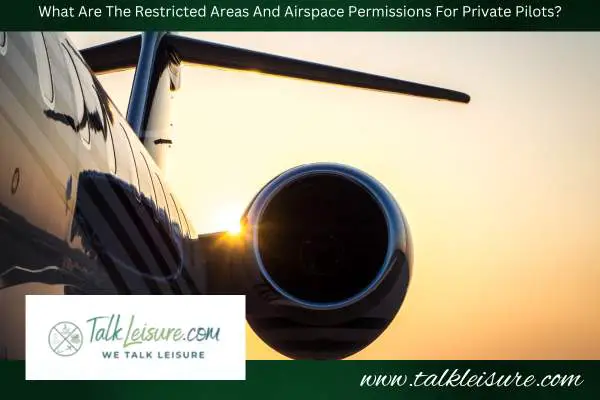
As a private pilot, you need to be aware of certain restricted areas and airspace permissions when flying internationally.
Restricted Areas
Many countries have restricted airspace, and private pilots cannot enter without proper authorization.
These restricted areas are typically designated for security reasons or to protect sensitive areas, such as military installations.
It is essential to familiarize yourself with the restricted areas of the countries you plan to fly to and obtain the necessary clearances if required.
Airspace Permissions
In addition to restricted areas, private pilots may need to obtain specific airspace permissions to fly in certain controlled or regulated airspace.
These permissions can include obtaining flight plans, filing a notice of arrival, and complying with specific routing procedures.
Researching and understanding the airspace requirements of the countries you plan to fly to and following the necessary procedures are crucial.
International Flight Permits
Private pilots may also need international flight permits from the respective aviation authorities.
These permits are typically required to enter and operate aircraft in foreign airspace.
The specific requirements and procedures for obtaining international flight permits vary between countries, so it is essential to contact the relevant aviation authorities or consult with aviation experts for guidance.
It’s crucial to prioritize safety and comply with all regulations and restrictions when flying internationally as a private pilot.
A clear understanding of restricted areas, airspace permissions, and international flight permits will ensure a smooth and compliant flying experience.
What Are The International Air Traffic Regulations For Private Pilots?
When flying internationally as a private pilot, you must familiarize yourself with international air traffic regulations to ensure safe and compliant operations.
International Civil Aviation Organization (ICAO) Standards
The ICAO is an international organization that sets standards and regulations for aviation safety, security, efficiency, and environmental sustainability.
Private pilots should familiarize themselves with ICAO standards as they apply to aircraft operations and comply with them when flying internationally.
Radio Communication Requirements
When flying in foreign airspace, private pilots must often have a working knowledge of English for radio communications.
English is the internationally agreed-upon language of aviation, and pilots must be able to communicate effectively with air traffic control and other aviation professionals.
Navigation And Position Reporting
Private pilots flying internationally must adhere to specific navigation and position reporting procedures, as international regulations require.
These procedures ensure accurate tracking of aircraft and facilitate efficient air traffic management.
Overflight And Landing Permissions
Private pilots must obtain overflight and landing permissions from the appropriate authorities of the countries they plan to fly over or land in.
These permissions are essential to complying with the sovereign airspace regulations of each country and maintaining international airspace security.
Customs And Immigration Procedure
Private pilots flying internationally must comply with the customs and immigration procedures of each country they enter.
This includes proper documentation, declaration of goods, and clearance procedures.
It is crucial to research and understand the customs and immigration requirements of the countries you plan to fly to and comply with all relevant procedures.
By familiarizing yourself with these international air traffic regulations and adhering to them, you can ensure safe and compliant flying operations as a private pilot.
If the private pilot needs to allow a passenger to fly an aircraft, then there are some additional regulations to be considered.
Conclusion
In conclusion, while holding a private pilot license provides you with the freedom to fly various aircraft, there are certain limitations and regulations that you need to be aware of.
Private pilot licenses’ specific privileges and restrictions differ from country to country, so it is essential to familiarize yourself with the rules and regulations of the jurisdiction where you intend to fly.
Some countries may require additional certifications or ratings to fly in their airspace.
In summary, while holding a private pilot license grants you the freedom to enjoy the thrill of flying, it is essential to be aware of its limitations and regulations.
Always stay updated with the aviation laws of your jurisdiction and consider pursuing additional certifications if you wish to fly commercially or in specific regions.
FAQs
Can You Make Money With A Private Pilot Certificate?
While a private pilot certificate allows you to fly for leisure or personal reasons, it does not permit you to use your flying skills for commercial purposes.
In most cases, you cannot earn money by flying passengers or cargo with a private pilot certificate.
If you are interested in a career as a pilot or using your flying skills to generate income, you would need to pursue additional certifications, such as a commercial pilot license or an airline transport pilot license (ATPL).
These licenses allow you to fly for hire and compensation.
Can You Fly People Around With A Private Pilot’s License?
Yes, as a private pilot, you can fly people around with some restrictions.
While you cannot operate as a commercial pilot and charge passengers for your services, you can fly friends, family, and colleagues as long as there is no exchange of money or compensation involved.
Additionally, there may be restrictions on the type of aircraft you can fly and the number of passengers you can carry, so it’s essential to refer to the regulations of your licensing authority.
Can I Be A Pilot Anywhere In The World?
A private pilot license does not automatically grant you the ability to fly anywhere.
The regulations and requirements for flying vary from country to country, and you may need to fulfill additional criteria, such as obtaining local certifications or licenses, to fly in specific regions.
It is crucial to research and understand the aviation regulations of the country you plan to fly into and ensure that you comply with all the requirements.

